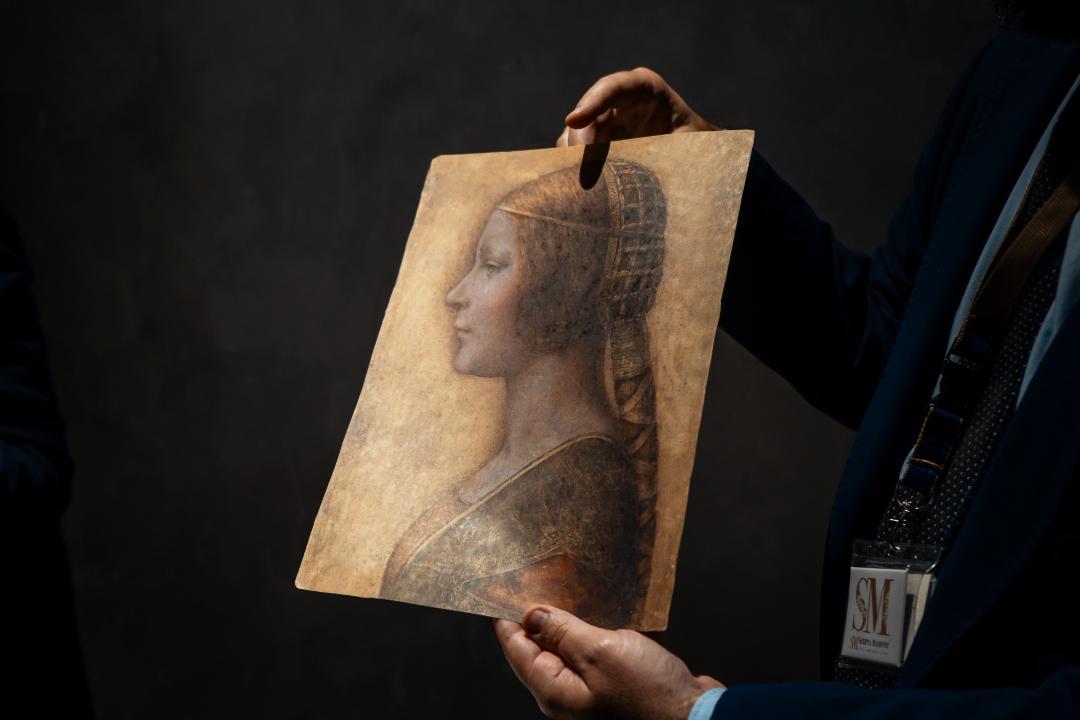ASTANA – Leonardo da Vinci’s La Bella Principessa has settled into its temporary new home at the National Museum of Kazakhstan for the first time in the country, where the masterpiece will be on display for the next two months from June 7 till Aug. 4.

The curator presents a replica of Leonardo da Vinci’s La Bella Principessa before leading visitors into the exhibition room with the original. Taking photos or videos inside the room is not permitted. Photo credit: gov.kz.
Da Vinci’s genius is reflected in his La Bella Principessa portrait of a young woman from the Italian aristocracy, painted at the end of the 15th century. Thought to have been a lost masterpiece, La Bella Principessa is perhaps the most mysterious among his oeuvre with some critics perceiving a deadness to woman’s eye, while others seeing a sense of superiority and excellence.
Marco Alberti, the ambassador of Italy in Kazakhstan, said the true significance of the exhibition lies in the cultural dialogue it fosters.
“Why the need for this exhibition? The answer is that we wanted to present you today something extraordinary, unusual, unique. In the context of promoting culture, which we consider fundamental and very significant between our countries. Culture creates a dialogue, it creates business and promotion between countries, communication between them,” said Alberti.
“We chose Leonardo because he represents futurism, that is, the future. Modernity is not just innovation, it is innovation that changes the world. It’s something joint, a combination of tradition and innovation,” he added.
General Director and Founder of Scripta Maneant publishing house Giorgio Armaroli said they have dedicated six months of effort to bring this exhibition to fruition. The painting has arrived at the National Museum in midst of its 528th birthday.
“La Bella Principessa is a unique, magical, mysterious work of art depicting Bianca Sforza. It was painted on parchment because it was part of a manuscript. It’s a very delicate painting because it turns 528 years old today. We have divided a huge amount of work equally. It was not easy to bring this masterpiece of Leonardo da Vinci here,” said Armaroli.
“Leonardo was already a leader of the Renaissance in his time. And the fact that Leonardo’s work is here today, in this museum, means that he can continue to spread his light, to share this symbol of renaissance with others,” he added.
Previously, the painting was exhibited only five times around the world.


